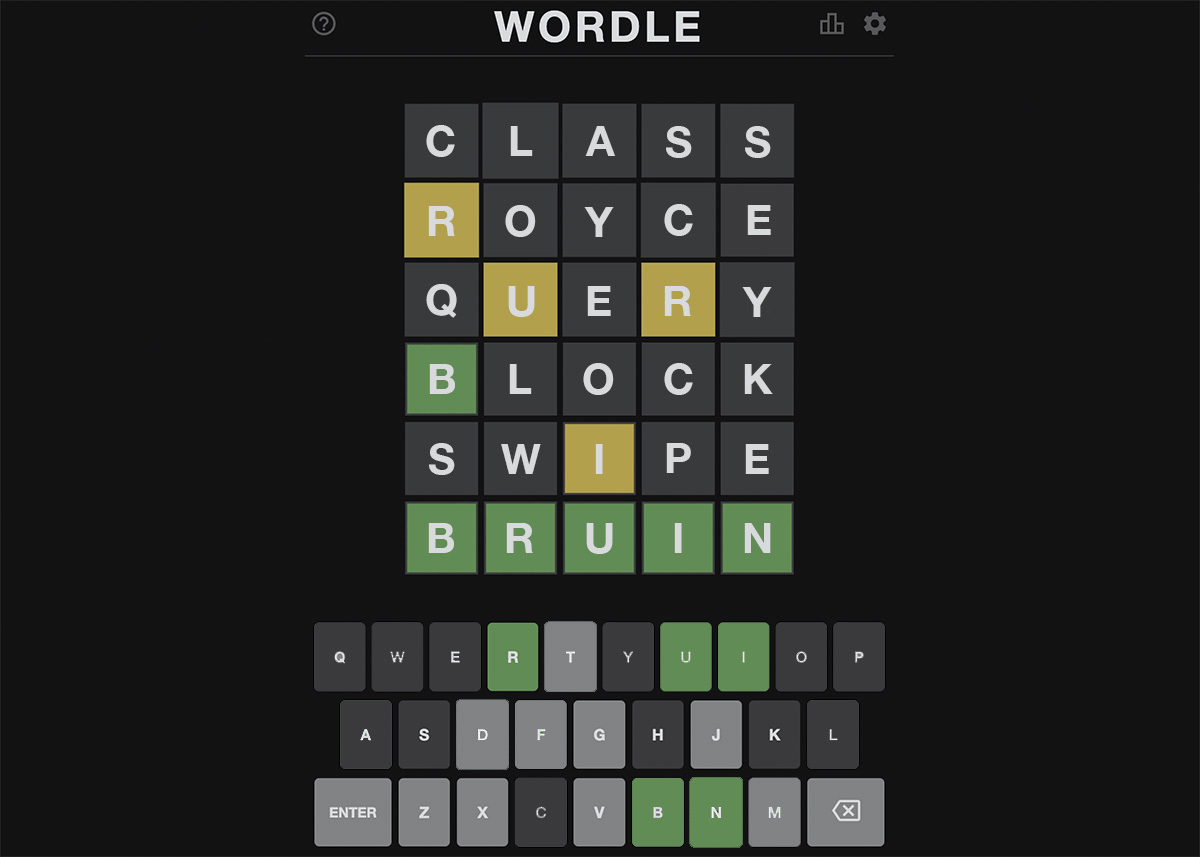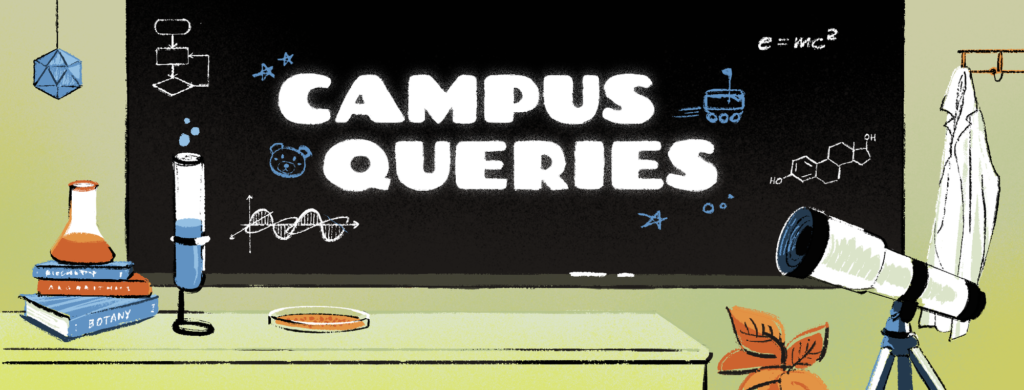Campus Queries: What is Wordle, and why is it so popular?

The game Wordle (pictured) involves six tries to guess a certain five-letter word each day. Its popularity can be attributed to the simple design and social features, UCLA experts said. (Photo illustration by Ashley Kenney/Photo editor)

By Leila Okahata
Feb. 14, 2022 12:27 a.m.
This post was updated Feb. 14 at 10:21 a.m.

Campus Queries is a series in which Daily Bruin readers and staff present science-related questions for UCLA professors and experts to answer.
Q: What is Wordle, and why is it so popular?
A: Wordle is a game in which players have six attempts to guess the five-letter mystery word, or Wordle, of the day. The game was released in October, and according to a report from The New Yorker, it had only 90 players in November but amassed more than 2 million in January.
Simplicity is what is appealing about Wordle, said Jesse Rissman, an associate professor of psychology. It is very easy to figure out what one is supposed to do and how to play, even without instructions, he added.
Moreover, unlike other daily word games like crossword puzzles – which require a more general knowledge of facts – Wordle is easier and quicker as it only tests for common five-letter words, he said.
“It’s not like Jeopardy, where you have to have a sort of extreme knowledge on all of these different subject matters,” he said. “This is just knowing how to speak English and being able to try to guess the word using the 26 letters available in the alphabet, so I think that makes it accessible.”
Daniel Snelson, a faculty member of the UCLA Game Lab and an assistant professor of English and design media arts, said in an emailed statement that he agrees with Washington University professor Ian Bogost’s explanation that the game’s popularity can be summarized in five-letter, Wordle-style words: normy, comfy, gabby and happy. But Snelson said he also believes the game is itchy.
“Popular daily puzzles like Wordle manage to linger in the back of the mind, once called forward they are hard to resist,” he said in the statement. “The puzzle is there, waiting, why not solve it right now!”
Wordle itself also has some elements that encourage players to keep playing as they solve each puzzle. For instance, players receive feedback after each guess highlighting whether the individual letters of their guess are a part of the mystery word or not and if the letter is in the correct location. This performance feedback can be highly reinforcing and keeps players guessing for the correct word, said Kate Wassum, a professor of psychology, in an emailed statement.
Wordle also offers players the option to share their score. C. Thi Nguyen, an associate professor of philosophy at the University of Utah, said in a Twitter thread that the ease of sharing Wordle scores on social media is a driving force behind the game’s popularity.
The game can be socially reinforcing, Wassum said in the emailed statement. The positive feedback from friends, family and even strangers can be quite powerful, she added.
In addition, Snelson said sharing scores allows players to communicate their experience through its simple emoji-based language.
“In grey, yellow, and green emojis, the Wordle shares each tell an immediately decipherable story of success or failure, sheer luck or piecemeal victory,” he said in the emailed statement. “My sense is that many folks are looking for ways to share these kinds of minor stories with each other – especially in socially sanctioned ways, and most especially in ways that don’t require an excess of effort!”
Sharing scores also helps keep people connected and interacting in a time of isolation, Wassum said.
“Perhaps because we have been lacking in social experience due to the pandemic, the opportunity that Wordle provides to engage in a simple, collective social experience is even more reinforcing,” she said.
When it comes to Wordle strategy, Rissman said he tries to start his guesses using words with at least two vowels and popular consonants, like heart, store and adore.
Albert Lee, the internal vice president of Bruin Gaming and a chemical engineering graduate student, said he uses a strategy he calls “L + Ratio.” His first guess is the word ratio, as the letters R and T are the most common consonants in the English language and the three vowels help narrow down what vowels the mystery word has. His second guess is then a word that starts with the letter L, as it is a common consonant, along with the vowels found in the first guess.
In addition, Kate Land, the external vice president of Bruin Gaming and a third-year computer science student, said starting with the word adieu can be useful as it uses almost all the vowels of the alphabet.
Snelson, on the other hand, said he thinks the best strategy is no strategy at all.
“I’d urge readers to learn as little about the math and strategy of the game as possible – why steal the fun of discovery from yourself?!” he said in the statement. “The grades don’t matter!”


